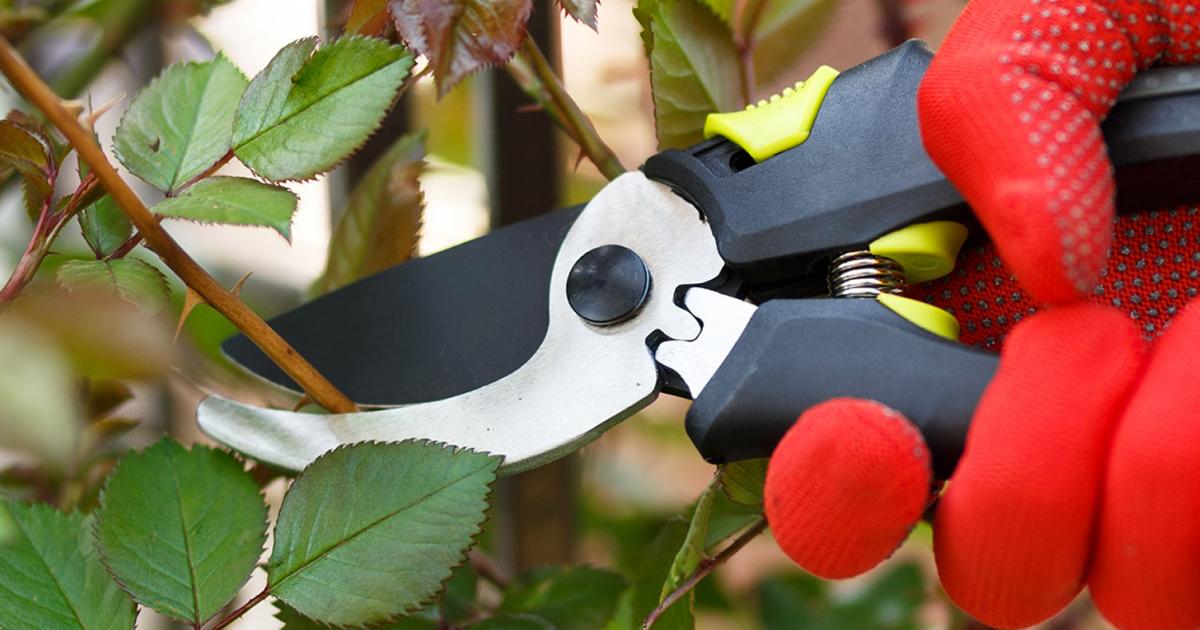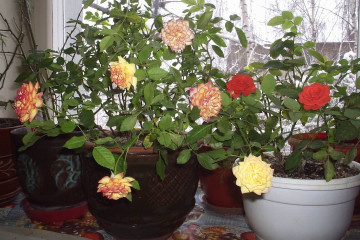Rose Cordana (Kordana) - home and outdoor care in the garden
Content:
Rose Cordana is a miniature representative of the Rosaceae family, with traditional, but medium-sized inflorescences. This plant is usually planted in a garden, less often it is grown in a clay pot in an apartment. Due to its relatively unpretentious nature, Cordana enjoys stable popularity among lovers of flowering plants. It is also suitable for a novice florist, if you show sufficient care when leaving.
Rosa Kordana - what is this variety, the history of creation
The variety was bred in Europe at the beginning of the 19th century, as a result of crossing a dwarf Chinese and a polyanthus (multi-flowered) rose, having received a small growth from the first, and a wealth of inflorescences from the second. The name "Cordana" comes from the name of the grower Wilhelm Cordes, who bred the variety. The flower is diminutive and decorated with baby buds: the height of the stems rarely exceeds 30 cm, and the diameter of the inflorescence can be only a few centimeters.
The rose is suitable for planting both in open ground and in a pot. However, one of the most common sub-varieties of this flower - Cordana Mix - is best kept only in a controlled environment, as it is too capricious for outdoor living.
The buds are found in several colors:
- white and cream;
- pink;
- yellow;
- orange;
- bright scarlet.
Stems and small leaves have a rich green color, turning into dark green and even emerald green. The buds begin to bloom in the spring and are pleasing to the eye until around October.
Cost is another advantage of this mini-rose: the price for a bush, often consisting of several independent shoots, varies between 200-250 rubles. Unsurprisingly, Cordana fans are gradually picking up all the color options.
The alternative name of Cordana is a border rose. It is prized by landscape designers for its dense, dense bloom, low stem height and the grace of small flowers. She is often chosen for the role of a low "hedge". Occupying a modest space on a garden plot or flower bed, a mini-rose performs its decorative function perfectly.
Growing a flower, how to plant it correctly
As a border plant, Cordana is planted in the form of adult flowers or grown shoots. Spring is the best time for such serious manipulations with delicate roses. The earth should warm up to at least 10 degrees.
The soil can be bought ready-made or you can mix garden soil, peat and sand on your own, while the proportion of peat should be slightly higher. The soil is taken slightly acidic or neutral.
The shoot should be high enough - 25-30 cm, this will help the plant to survive. The stems with buds are removed, the rest are shortened by about a third. Before planting, the roots must be completely healthy, they must get rid of rotten shoots.
It is better to choose a sunny and low wind day for planting. If possible, a place for the bushes should also be chosen poorly ventilated, but at the same time well lit.
Planting procedure:
- prepare the soil: make drainage (if necessary), add fertilized soil;
- water the planting site abundantly;
- make holes and place shoots, adding earth;
- water again, this time with fungicide.
In order for the plants to survive the winter well in the open air, they need to be covered in late autumn.
Plant care outdoors and at home
Cardan rose how to care after purchase
Mini rose is a delicate flower. To preserve its aesthetic properties for a long time, it is important to know how to care for the Cordana rose after purchase.
Immediately after purchase, the flower must be washed in warm water. Contrary to the recommendations of some experts, one should not rush and immediately transplant the rose from a temporary pot into a permanent container or open ground: when moving to a new place of residence, the flower has already experienced stress, so Cordana needs to be provided with peace at least for a few days.
The transport pot can be put in a sunny place for now (for example, a windowsill on the south side or a balcony), while you need to moisten the soil according to the irrigation regime and for a while refuse feeding.
Cordana loves good watering - every week in winter, even more often in summer. The potted soil or open ground around the stem should not dry out. In this case, the other extreme should be avoided - it is not necessary to moisten the substrate too much, otherwise the roots will start to rot, and the plant will have to be urgently "reanimated". A dry top layer serves as a signal for watering.
According to the general rule of floriculture, water that does not stay in the pot and flows into the pan must be removed, otherwise the microclimate in the container will become too humid. Delicate spraying of leaves is allowed. On the street, the land in the flowerbed needs to be loosened when watering.
For rose Cordana, the soil is prepared as follows:
- put expanded clay or granules of other drainage material on the bottom of the pot to a height of about 4 cm;
- pour a layer of the main soil on top - this can be a ready-made nutritious soil for the growth of the root system (brands popular among rose lovers are Pokon, Greenworld).
During the period of active flowering, roses are not fertilized. Instead, in early spring, nitrogen-containing top dressing is introduced into the pot or open ground, and in the fall, after the buds have fallen, the plants are fed with fertilizer with potassium and phosphorus (potassium sulfate, potassium nitrate, potassium nitrate, superphosphate).
In floriculture, a common fertilizer containing all of the above substances is azofoska - a complex feeding in the form of granules. The shares of the three active ingredients - nitrogen, potassium and phosphorus - are approximately equal. Since the fertilizer is packaged in large bags, it is beneficial to use it for summer cottages and gardens.
In a planned mode, potted plants are transplanted in the spring, as a last resort, at the beginning of summer. During the active growing season (until about mid-autumn), it is not recommended to disturb the roses.
Before the procedure, the substrate must be moistened, allowed to dry out a little, after which the earthen lump is taken out and placed in a new pot, the diameter of which is 3-5 cm larger than the previous one. Fresh soil must be poured around the lump and loosely tamped - the roots must "breathe".
At the first transfer, it should be remembered that store suppliers often place more than one plant in one pot - this is how they achieve the splendor of the bush. It is better to plant them separately so that the leaves do not get crowded, and waterlogging does not occur in the lower part of the stem - a favorable environment for the fungus.
Pruning is usually done in the off-season. In the spring, they get rid of dry stems and twigs: they not only spoil the appearance of the plant, but also interfere with the development of fresh buds. In the fall, you can re-clean the bush, remove yellowed leaves, cut off wilted buds.
In winter, roses may lack sunlight, especially if the house lacks windows facing south, southeast. In this case, you need to think about installing a fluorescent lamp. If Cordana experiences light starvation, the buds in the spring can not wait.
Blooming rose
During the growing season, watering and feeding are carried out as described above. In late autumn, a dormant period begins, which will last approximately until the end of winter. At this time, feeding is not carried out, you can water less often.
The plant is placed in a cooler place and left there for two months. When the rose begins to give new leaves, this will be a signal that she has rested, and you can return to full care.
It is expected that with the arrival of spring, Cordana will begin to bloom profusely. If this does not happen, you need to analyze what the florist is doing wrong. Perhaps the flower is not well rested, it lacks fertilizer or light. If you eliminate the blemishes in the care, a healthy plant will bloom.
Flower propagation
The rose reproduces well with apical cuttings cut at an angle of 45 degrees. There should be several buds on the stem, the lower leaves are removed.
Description of the procedure:
- the stalk is cut off from the mother plant;
- the place of the cut is dried;
- placed in water until the first short roots appear;
- planted in a pot and covered with plastic wrap;
- watered as the soil dries.
In addition to grafting, breeding is carried out by seed. In winter, the seeds are soaked in warm water and immersed in moist soil in a common container. In the spring, young bushes should appear - the so-called plantings, which, depending on their growth, can be moved into individual pots or planted directly into the ground.
Diseases, pests and ways to control them
Cordana does not belong to a hardy plant, therefore it must be protected from diseases, especially fungal ones. Infection occurs from neighboring flowers or due to too high soil moisture. The presence of the disease is indicated by a white or gray coating on the leaves, darkening of the stem.
As a preventive measure, watering with the addition of a fungicide is used. The best way to protect a rose from fungus is to follow the rules of care, since it will be difficult for the plant to defeat the fungus.
As a result, experts recommend cultivating Cordana in the open field: in a garden or in a summer cottage. However, with proper care and proper patience, this miniature rose will bloom on the windowsill in the apartment.





















